Spatial Computer Black Hole - Electronic Bass Trap

DarqueKnight
Posts: 6,765
Introduction
I am a firm believer in room treatments...I just don't like the way most of them look. I don't want to have my living room looking like a quasi-anechoic chamber or recording studio. Low frequency correction is particularly challenging because large bass wavelengths require large structures to treat them.
Spatial Computer's Black Hole Anti-Wave Generator reduces the effects of room resonances in the bass region by analyzing the sound picked up by a calibrated microphone and then generating an out of phase cancellation signal. Its designer is Spatial Computer's president, Clayton Shaw. Clayton is also the designer of the Emerald Physics loudspeaker line.
My listening room/living room presented some challenges due to its size (21 x 17 with 10 foot ceiling) and due to large openings into other rooms (adjoining 11 x 11 dining room with 12 foot ceiling and adjoining great room/kitchen area). I also had some concern about whether the bass output from my larger than average loudspeakers (64" H x 22" W x 13" D) would overwhelm the smallish Black Hole (17" H x 17" W x 16" D). The optimum placement in my room was near the large archway leading into the great room area. This location was also directly in front of the left speaker and 17 feet away. This was not the most satisfying aesthetically, but it was workable.
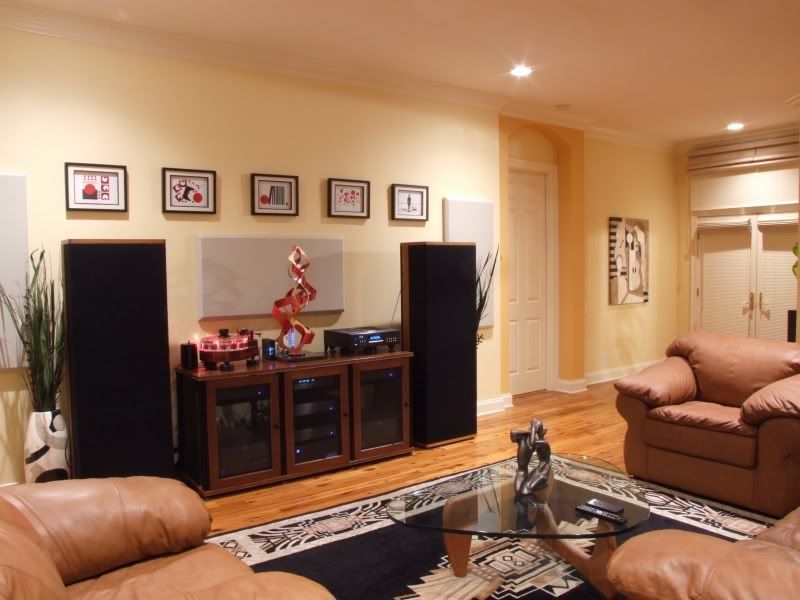
Figure 1. Two channel system listening room.
Black Hole Specifications:
Type: Active acoustical resonance damping device with on board signal processing.
Operating Range: 22 Hz - 220 Hz.
Power Output: 240 Watts RMS.
Transducer: 12 inch long-throw.
Weight: 50 pounds.
Dimensions: 17" H x 17" W x 16" D.
Price: $1295 Internet direct (www.spatialcomputer.com)
Trial Period: 30 day with full refund of purchase price (minus two-way shipping).
I did not hear or measure any improvement with the first unit I received. Clayton responded to my email within a few hours and he suggested talking me through some diagnostic procedures. We determined that the processor was not working and may have been damaged in shipping. A return shipping label was emailed for the defective unit and a second unit was promptly shipped. The second unit worked as specified.
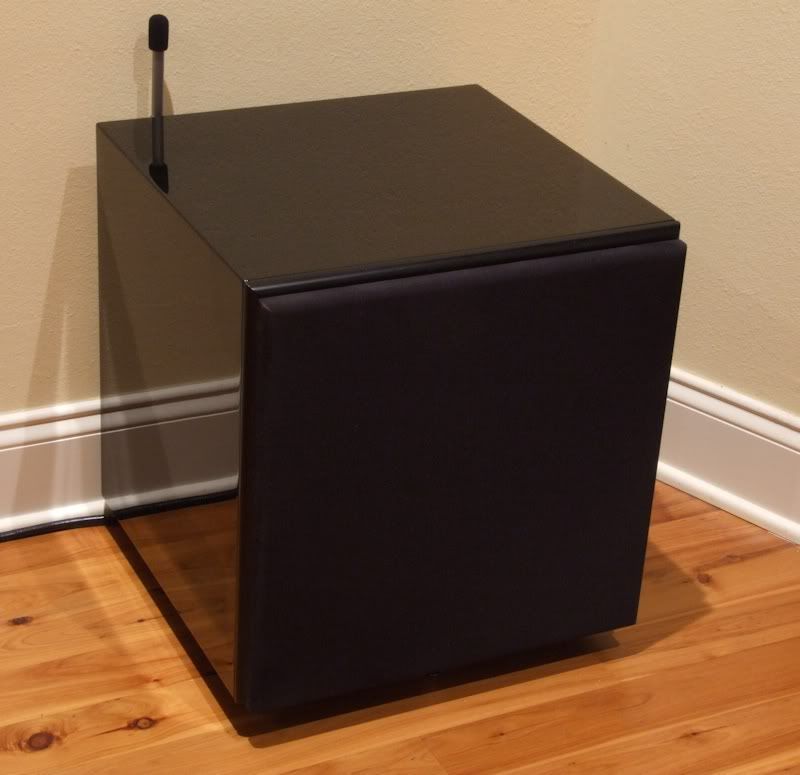
Figure 2. The Black hole provided an elegant solution to some of my room resonance issues.
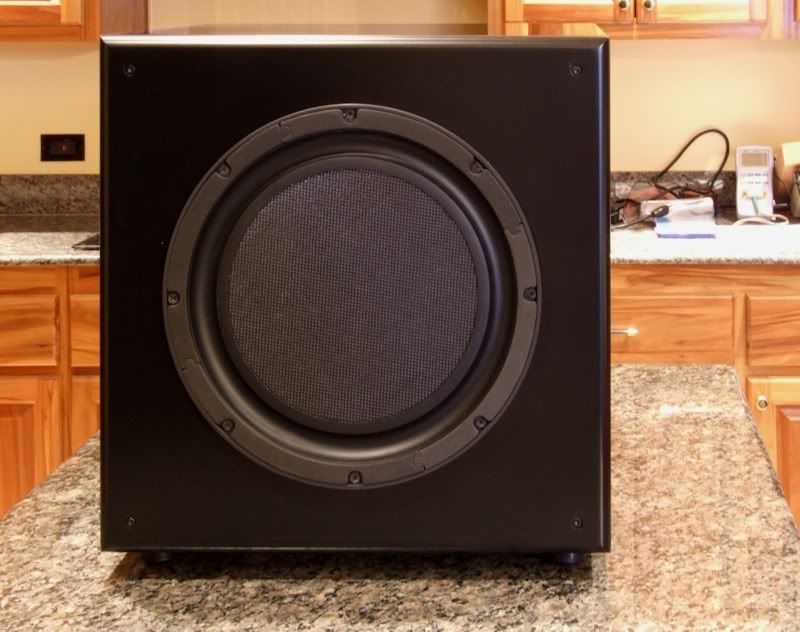
Figure 3. The Black Hole uses a Dayton Audio NS310-44 long-throw 12" transducer.
The grille frame is held in place by small magnets.
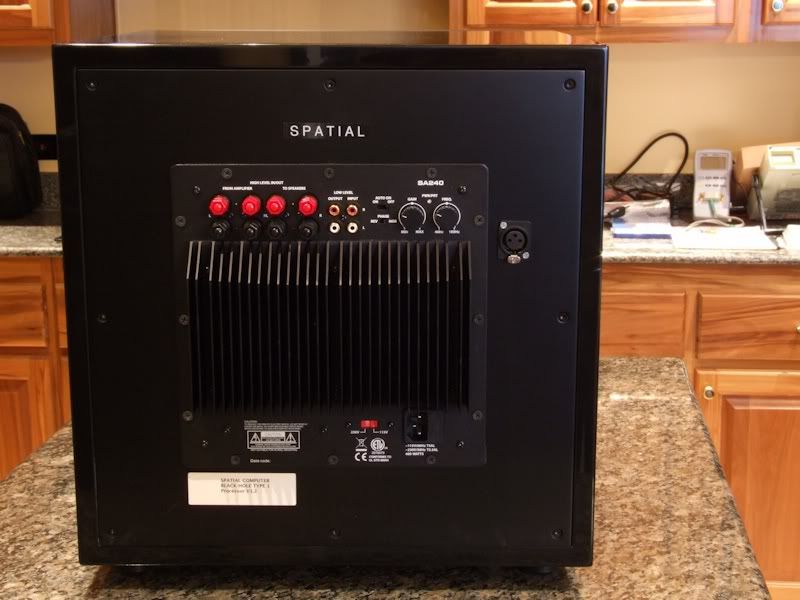
Figure 4. The plate amp is a Dayton Audio SA240 which delivers 240 watts RMS.
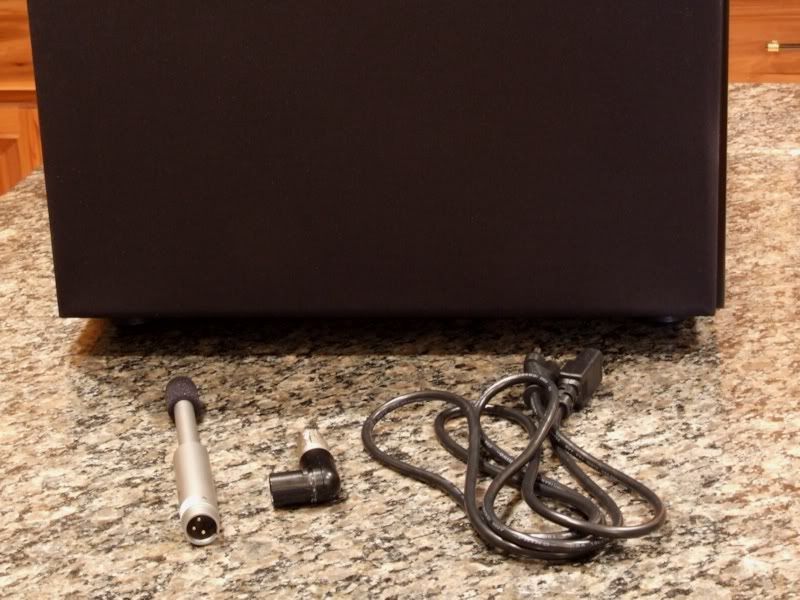
Figure 5. Accessories: Dayton Audio EMM-6 calibrated microphone, microphone 90-degree adapter and 18
AWG power cord.
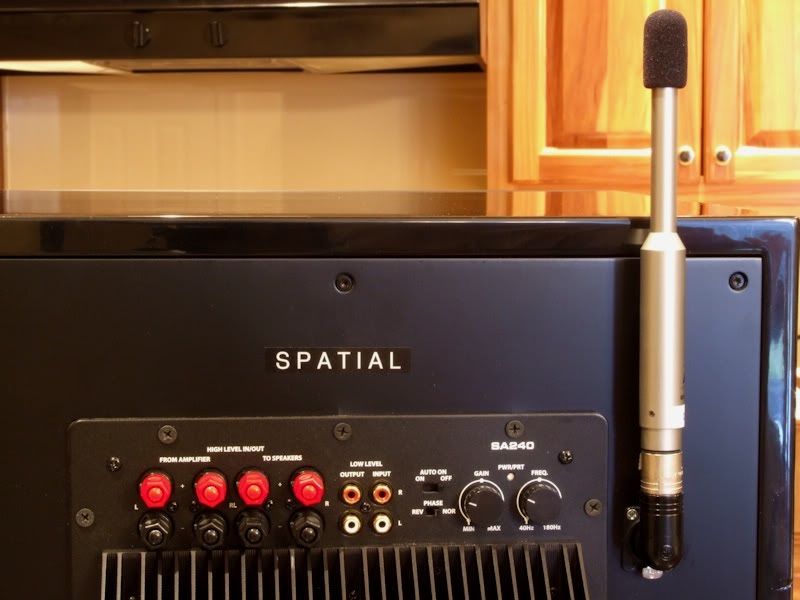
Figure 6. EMM-6 microphone mounted.
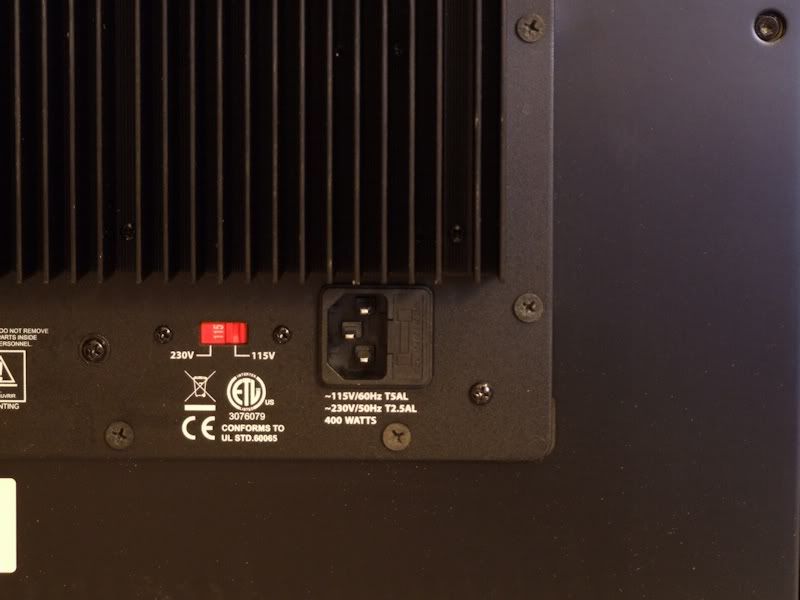
Figure 7. The location of the IEC jack does not lend itself to aftermarket power cords with large connectors.
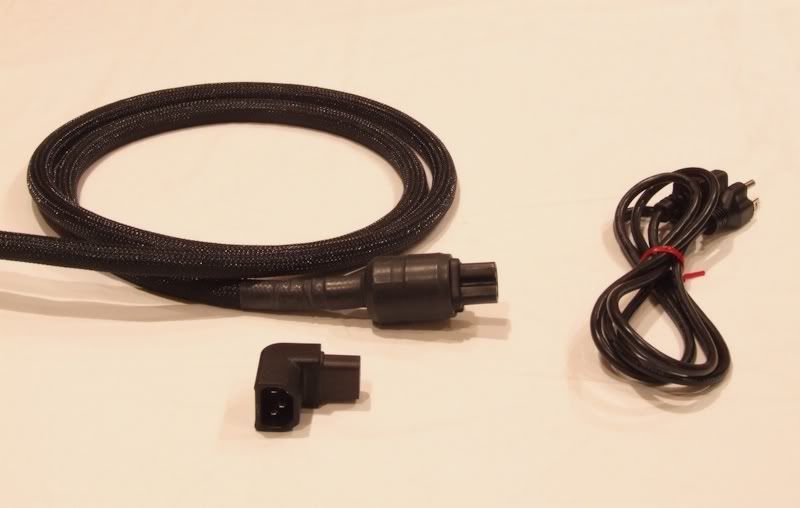
Figure 8. I switched the stock 18 AWG power cord with a 10 AWG Signal Cable MagicPower cord. There was
no audible or measurable difference in performance with either the MagicPower or stock power cord. The
AudioQuest 90 degree adapter was required to provide enough space for the MagicPower cord's connector to
clear the heat sink fins.
I ended up using a Volex 14 AWG power cord with 90 degree connectors on both ends so that the cord would lay flat against the wall and lay flat against the rear of the Black Hole. I still needed to use the AudioQuest adapter with the Volex cord.
Packaging
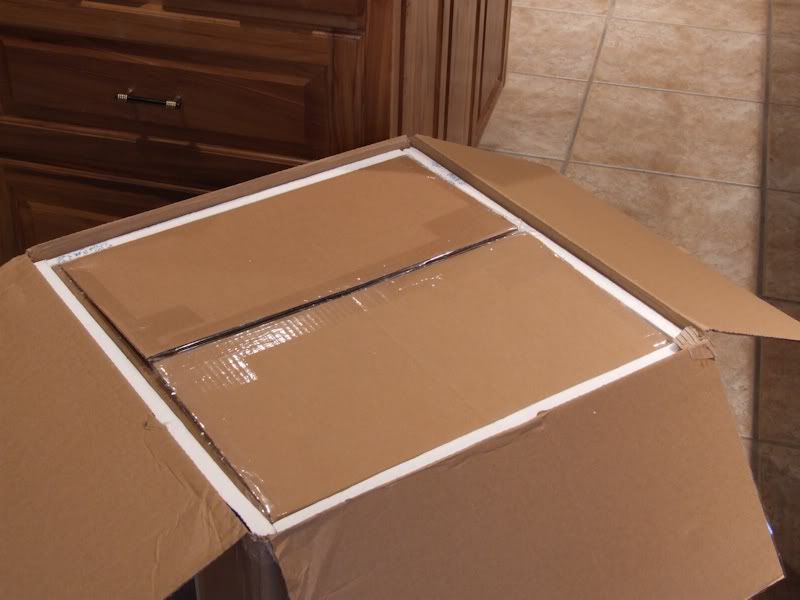
Figure 9. Double-boxed packaging with thick Styrofoam sheets between boxes.
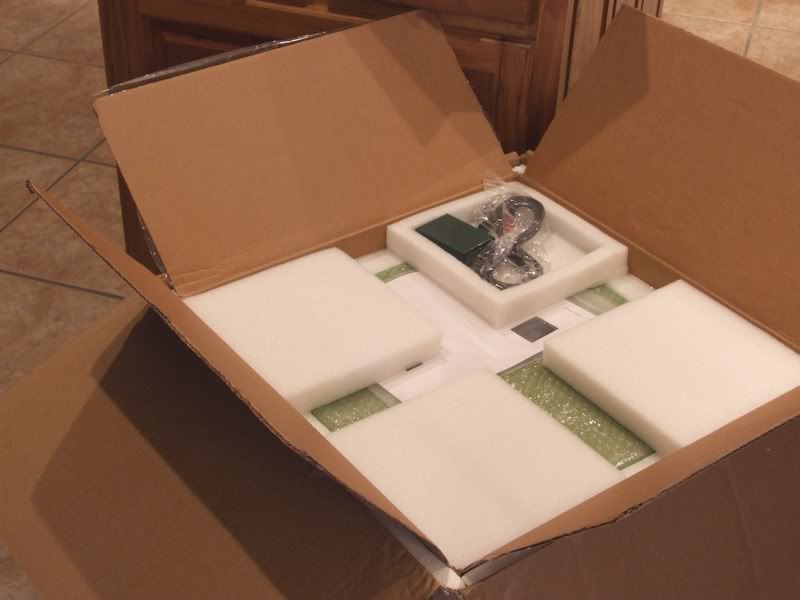
Figure 10. Inside the inner box was thick foam, bubble wrap and kraft paper.
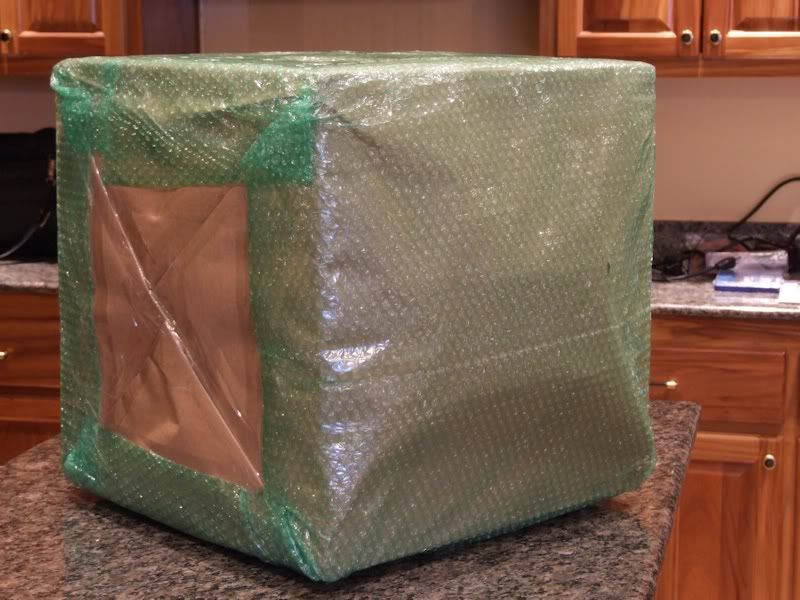
Figure 11. The Black Hole's piano black finish was wrapped in kraft paper, then with a layer of bubble wrap.
Pulp paper is mildly abrasive, so I'm not sure I would have chosen it as a wrapping material for a glossy
furniture grade finish.
The Sound
Setup consists of attaching the microphone, placing the unit in a corner of the room's rear wall and plugging it in. No calibration is required, but some experimentation with placement and settings for gain and center frequency must be done. The manual discusses other placement options if rear corners are not available. The best sounding location in my room was determined through a combination of listening and measurement with Dayton Audio's OmniMic Acoustic Measurement system.
My listening room has a response peak of 14.6 dB at 41 Hz. Room gain, within reasonable limits, is actually desirable because human hearing has less sensitivity to bass frequencies. Therefore, room gain, within reasonable limits, contributes to perceived flatter, more natural response.
The human ear is most sensitive to frequencies in the range of 2 kHz to 5 kHz. This range corresponds to the range of harmonic (overtones) of human voices, which have a fundamental frequency range of 85 Hz to 225 Hz for adult males and 165 Hz to 225 Hz for adult females. The differentiating aspects of individual voices which have similar fundamental frequency range is due to differences in harmonic content. The heightened sensitivity in the 2-5 kHz range provides babies with the ability to quickly memorize the harmonic signature of their mother's voices and it provides small children with the ability to quickly identify their mother's voices in noisy environments if required. Likewise, adults are able to memorize and identify the harmonic signatures of their children's voices and are able to consciously or sub-consciously identify the mood and other verbal communication cues of people they talk to. For example, the harmonic structure of most people's voices changes considerably when they lie.
One good thing about room resonances is that they are not audibly apparent unless something excites them. The larger the room, the lower the room resonance frequency and the smaller the chance that it will be excited and that such excitation will be distractingly obvious. In my case, I listen to a moderate amount of music with electric bass content (that low E1 note at 43.6535 Hz!) and bass synthesizer content (that low F1 note at 41.2642 Hz).
The Black Hole was only able to provide 3 dB of correction in my room, but that was enough for significantly audible results. On musical selections with heavy bass content, the bass was faster, more natural sounding, more articulate and much more detailed. George Howard's "Diane's Blues" ("Attitude Adjustment" CD, track 4 or "Very Best of George Howard" CD track 5) has a low F1 synthesizer bass note at 00:10 into the track. That two-second note effectively drowned out the other percussion instruments and also obscured some mid range sounds because of the attention called to the heavy bass. Switching on the Black Hole cleaned things up considerably. The bass became tonally balanced with the mid and high range sounds.
I gained a greater appreciation for the richly detailed snare drum solo on Dave Brubeck's Take Five ("Time Out" CD, track 3). I appreciated it even more from the higher resolution SACD. I appreciated it much more on the much higher resolution 180 gram vinyl. The vinyl offered more tactile sensation, more skin and stick sound, more sharply defined and clearer reverberant echos from the center and right center of the sound stage and more stereophonic realism.
There was also greater clarity at the sides of the sound stage where percussion instrument sounds were frequently located. Some users have reported increased sound stage width with the Black Hole. This may have been actual lateral expansion or it may have been perceived lateral expansion due to greater image clarity and detail at the sides of the sound stage.
Aside from the greater clarity and detail from bass, percussion and drum instruments, I was also impressed by the increased weight and clarity of low notes from acoustic and electric pianos.
There were no apparent sonic anomalies, artifacts or aberrations introduced by the Black Hole. I assure you that I was quite diligent in listening for them.
I am a firm believer in room treatments...I just don't like the way most of them look. I don't want to have my living room looking like a quasi-anechoic chamber or recording studio. Low frequency correction is particularly challenging because large bass wavelengths require large structures to treat them.
Spatial Computer's Black Hole Anti-Wave Generator reduces the effects of room resonances in the bass region by analyzing the sound picked up by a calibrated microphone and then generating an out of phase cancellation signal. Its designer is Spatial Computer's president, Clayton Shaw. Clayton is also the designer of the Emerald Physics loudspeaker line.
My listening room/living room presented some challenges due to its size (21 x 17 with 10 foot ceiling) and due to large openings into other rooms (adjoining 11 x 11 dining room with 12 foot ceiling and adjoining great room/kitchen area). I also had some concern about whether the bass output from my larger than average loudspeakers (64" H x 22" W x 13" D) would overwhelm the smallish Black Hole (17" H x 17" W x 16" D). The optimum placement in my room was near the large archway leading into the great room area. This location was also directly in front of the left speaker and 17 feet away. This was not the most satisfying aesthetically, but it was workable.

Figure 1. Two channel system listening room.
Black Hole Specifications:
Type: Active acoustical resonance damping device with on board signal processing.
Operating Range: 22 Hz - 220 Hz.
Power Output: 240 Watts RMS.
Transducer: 12 inch long-throw.
Weight: 50 pounds.
Dimensions: 17" H x 17" W x 16" D.
Price: $1295 Internet direct (www.spatialcomputer.com)
Trial Period: 30 day with full refund of purchase price (minus two-way shipping).
I did not hear or measure any improvement with the first unit I received. Clayton responded to my email within a few hours and he suggested talking me through some diagnostic procedures. We determined that the processor was not working and may have been damaged in shipping. A return shipping label was emailed for the defective unit and a second unit was promptly shipped. The second unit worked as specified.

Figure 2. The Black hole provided an elegant solution to some of my room resonance issues.

Figure 3. The Black Hole uses a Dayton Audio NS310-44 long-throw 12" transducer.
The grille frame is held in place by small magnets.

Figure 4. The plate amp is a Dayton Audio SA240 which delivers 240 watts RMS.

Figure 5. Accessories: Dayton Audio EMM-6 calibrated microphone, microphone 90-degree adapter and 18
AWG power cord.

Figure 6. EMM-6 microphone mounted.

Figure 7. The location of the IEC jack does not lend itself to aftermarket power cords with large connectors.

Figure 8. I switched the stock 18 AWG power cord with a 10 AWG Signal Cable MagicPower cord. There was
no audible or measurable difference in performance with either the MagicPower or stock power cord. The
AudioQuest 90 degree adapter was required to provide enough space for the MagicPower cord's connector to
clear the heat sink fins.
I ended up using a Volex 14 AWG power cord with 90 degree connectors on both ends so that the cord would lay flat against the wall and lay flat against the rear of the Black Hole. I still needed to use the AudioQuest adapter with the Volex cord.
Packaging

Figure 9. Double-boxed packaging with thick Styrofoam sheets between boxes.

Figure 10. Inside the inner box was thick foam, bubble wrap and kraft paper.

Figure 11. The Black Hole's piano black finish was wrapped in kraft paper, then with a layer of bubble wrap.
Pulp paper is mildly abrasive, so I'm not sure I would have chosen it as a wrapping material for a glossy
furniture grade finish.
The Sound
Setup consists of attaching the microphone, placing the unit in a corner of the room's rear wall and plugging it in. No calibration is required, but some experimentation with placement and settings for gain and center frequency must be done. The manual discusses other placement options if rear corners are not available. The best sounding location in my room was determined through a combination of listening and measurement with Dayton Audio's OmniMic Acoustic Measurement system.
My listening room has a response peak of 14.6 dB at 41 Hz. Room gain, within reasonable limits, is actually desirable because human hearing has less sensitivity to bass frequencies. Therefore, room gain, within reasonable limits, contributes to perceived flatter, more natural response.
The human ear is most sensitive to frequencies in the range of 2 kHz to 5 kHz. This range corresponds to the range of harmonic (overtones) of human voices, which have a fundamental frequency range of 85 Hz to 225 Hz for adult males and 165 Hz to 225 Hz for adult females. The differentiating aspects of individual voices which have similar fundamental frequency range is due to differences in harmonic content. The heightened sensitivity in the 2-5 kHz range provides babies with the ability to quickly memorize the harmonic signature of their mother's voices and it provides small children with the ability to quickly identify their mother's voices in noisy environments if required. Likewise, adults are able to memorize and identify the harmonic signatures of their children's voices and are able to consciously or sub-consciously identify the mood and other verbal communication cues of people they talk to. For example, the harmonic structure of most people's voices changes considerably when they lie.
One good thing about room resonances is that they are not audibly apparent unless something excites them. The larger the room, the lower the room resonance frequency and the smaller the chance that it will be excited and that such excitation will be distractingly obvious. In my case, I listen to a moderate amount of music with electric bass content (that low E1 note at 43.6535 Hz!) and bass synthesizer content (that low F1 note at 41.2642 Hz).
The Black Hole was only able to provide 3 dB of correction in my room, but that was enough for significantly audible results. On musical selections with heavy bass content, the bass was faster, more natural sounding, more articulate and much more detailed. George Howard's "Diane's Blues" ("Attitude Adjustment" CD, track 4 or "Very Best of George Howard" CD track 5) has a low F1 synthesizer bass note at 00:10 into the track. That two-second note effectively drowned out the other percussion instruments and also obscured some mid range sounds because of the attention called to the heavy bass. Switching on the Black Hole cleaned things up considerably. The bass became tonally balanced with the mid and high range sounds.
I gained a greater appreciation for the richly detailed snare drum solo on Dave Brubeck's Take Five ("Time Out" CD, track 3). I appreciated it even more from the higher resolution SACD. I appreciated it much more on the much higher resolution 180 gram vinyl. The vinyl offered more tactile sensation, more skin and stick sound, more sharply defined and clearer reverberant echos from the center and right center of the sound stage and more stereophonic realism.
There was also greater clarity at the sides of the sound stage where percussion instrument sounds were frequently located. Some users have reported increased sound stage width with the Black Hole. This may have been actual lateral expansion or it may have been perceived lateral expansion due to greater image clarity and detail at the sides of the sound stage.
Aside from the greater clarity and detail from bass, percussion and drum instruments, I was also impressed by the increased weight and clarity of low notes from acoustic and electric pianos.
There were no apparent sonic anomalies, artifacts or aberrations introduced by the Black Hole. I assure you that I was quite diligent in listening for them.
Proud and loyal citizen of the Digital Domain and Solid State Country!
Post edited by DarqueKnight on
Comments
-
Measurements
It is commonly thought that the goal of room treatments should be the flattest possible response curve. Due to the nonlinearities of human hearing, i.e. heightened and decreased sensitivity depending on frequency, most people would perceive a flat room response as "off sounding" or boring. Human hearing is most insensitive to low base frequencies (20-60 Hz), highly sensitive to upper mid range frequencies (2-5 kHz) and slightly to moderately insensitive (depending on age and health) to very high frequencies (>10 kHz). Therefore, a room response with a substantial boost in low bass frequencies, a moderate cut in upper mid range frequencies and a moderate boost in very high frequencies would be perceived by the ear as close to flat response.
The Black Hole provided a -3 dB correction at the 41 Hz room resonance peak. Reducing a 14.6 dB room resonance peak to 11.6 dB might not seem like a lot...until you consider that -3 dB means a reduction of half the room resonance power at 41 Hz. The Black Hole also provided a +3 dB correction at 97 Hz, which was the location of a response dip adjacent to the resonance peak frequency range.
Figure 12. Room response with Black Hole correction. Outside of the 20-85 Hz room gain region, most
of the response deviates by no more than +/- 2 dB from reference.
Figure 13. Room response with and without Black Hole correction.
An additional 1 dB reduction of the room resonance peak was available when the an XLR cable was inserted between the microphone and Black Hole. This allowed the microphone to be placed on a stand with the microphone tip 43 inches from the floor. Placing the microphone further away from the Black Hole allowed the gain to be increased without crossing the feedback threshold. However, the aesthetics of permanently placing a microphone and stand in my living room were unacceptable, even though it provided Such Good Sound.
Figure 14. The use of three 1-1/2" aluminum cones under the Black Hole resulted in an inaudible, but very
small, yet measurable, improvement in response.
The active region of the Black Hole is 22 - 220 Hz, but some effect is seen on frequencies well above that region due to the harmonics of the fundamental frequencies in the active region.
Bass decay plots show how long it takes the sound to decay at each frequency. The ideal situation is flat response which means that some bass notes do not last much longer than others. Significant differences in decay times can cause a decrease in bass definition.
It is easier to see differences in the bass decay plots if they are saved to your computer and viewed in succession.
Figure 15. Bass decay without Black Hole correction.
Figure 16. Bass decay with Black Hole correction.
In figure 16, note the increase in bass decay times in the 65-100 Hz region which correlates with the increased response magnitude in the same region in the frequency response plots. Also note the substantial decrease in bass decay times at the room resonance frequency of 42 Hz.
The color coded lines in the harmonic distortion plots represent the following:
Black - frequency response.
Dark blue - sum of 2nd-5th harmonics.
Red - 2nd harmonic.
Purple - 3rd harmonic.
Green - 4th harmonic.
Light blue - 5th harmonic.
It is easier to see differences in the harmonic distortion plots if they are saved to your computer and viewed in succession.
Figure 17. Harmonic distortion without Black Hole correction.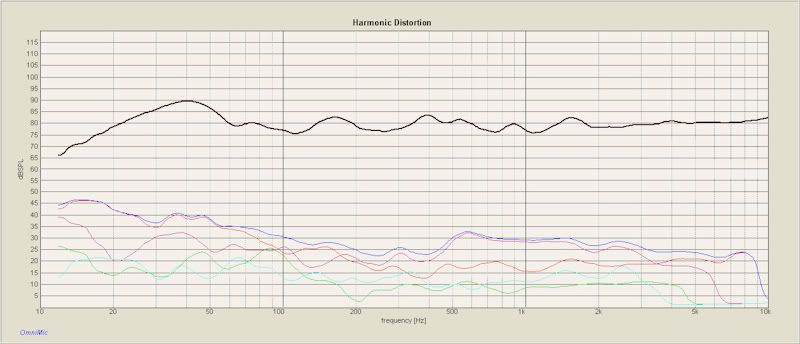
Figure 18. Harmonic distortion with Black Hole correction.
In figure 18, note the increased linearity of the sum-of-harmonics line (top dark blue line) in the Black Hole's active region (22-200 Hz).
Conclusion
I achieved good audible and measured results with a single Black Hole in a moderately large space with very large speakers. I expect that the results with rooms and speakers of small to average size would be quite spectacular. Better results could probably be achieved in my room with a second Black Hole, but placement aesthetics might prove challenging.
Associated Equipment
Pass Labs X0.2 preamplifier
Pass Labs XP-25 phono preamplifier
Parasound Halo JC 1 monoblock power amplifiers (800 watts continuous into 4 ohms)
Cary Audio CD 306 Pro Version SACD player
Teres Audio No. 255 turntable with Reference II motor, Ortofon MC Windfeld cartridge and Graham Phantom tonearm
AudioQuest Sky XLR interconnects
AudioQuest Everest speaker cables
Polk Audio SDA SRS 1.2TL loudspeakers (extensively modified, 4 ohms nominal impedance)
PS Audio P10 AC Regenerator
PS Audio AC-12 and Premier SC power cords
Three dedicated 20 amp AC circuits terminated with PS Audio Soloist SE in-wall line conditionersProud and loyal citizen of the Digital Domain and Solid State Country! -
The manufacturer did not specify a break in period. I remeasured after 100 hours of play time and did not see or hear any performance difference.Proud and loyal citizen of the Digital Domain and Solid State Country!
-
What is this device really? A smart SUB or an Anti-Sub sub?
-
It's purpose is to cancel low frequency room modes.The unit described works on the same principal and is basically a modern version of the Phantom Acoustics Shadow who's operation is described here. http://www.monarchyaudio.com/PDF/Phantom.pdfWhat is this device really? A smart SUB or an Anti-Sub sub? -
Nice review. I can't believe I missed this thread.
-
cool toy indeed. Now if I can have that and the speech jammer or yammer jammer I would be a very happy man.Polk Audio SDA CRS+ crossover 4.1TL by Trey/VR3 (Rings and custom stand by Larry)-Polk Audio SDA SRS2 crossovers by Trey/VR3Parasound HCA1500aYamaha rxa-3070 with musicast-Celestion SL6S presence,- sl9 surround backNHTsuper1's surroundMagnepan SMGParasound 1500pre- Sofia "Baby" tube amp - Monitor Audio Silver RX2 Marantz 2230/B&Kst140Technics 1200mk2 Gamertag: IslandBerserker I am but a infinitesimally small point meeting the line of infinity in the SDA universe
-
You always have the coolest reviews, thanks man.Source: Bluesound Node 2i - Preamp/DAC: Benchmark DAC2 DX - Amp: Parasound Halo A21 - Speakers: MartinLogan Motion 60XTi - Shop Rig: Yamaha A-S501 Integrated - Source: Rotel CD14MkII CD Player - Speakers: Elac Debut 2.0 B5.2
-
Agreed, You also have a very gorgeous living room and a wickedly cool setup. Always enjoy your posts DarqueKnight.You always have the coolest reviews, thanks man.Living Room
Fronts: RTi A7's
Center: Csi A6 VR3 "Fortress Plus"
Front Heights: Rti A1
Surrounds: Rti A3
Sub: HSU VTF-2 MK4 Damn this is a good SUB
Pioneer Pioneer Elite: SC-35-> Emotiva XPA-3
TV: Lg LW6500 55" Passive 3D
Blu-Ray Panasonic BD 210
XboX 360 Slim/Kinect
Acoustimac red suede panels -
jame165145 reported



